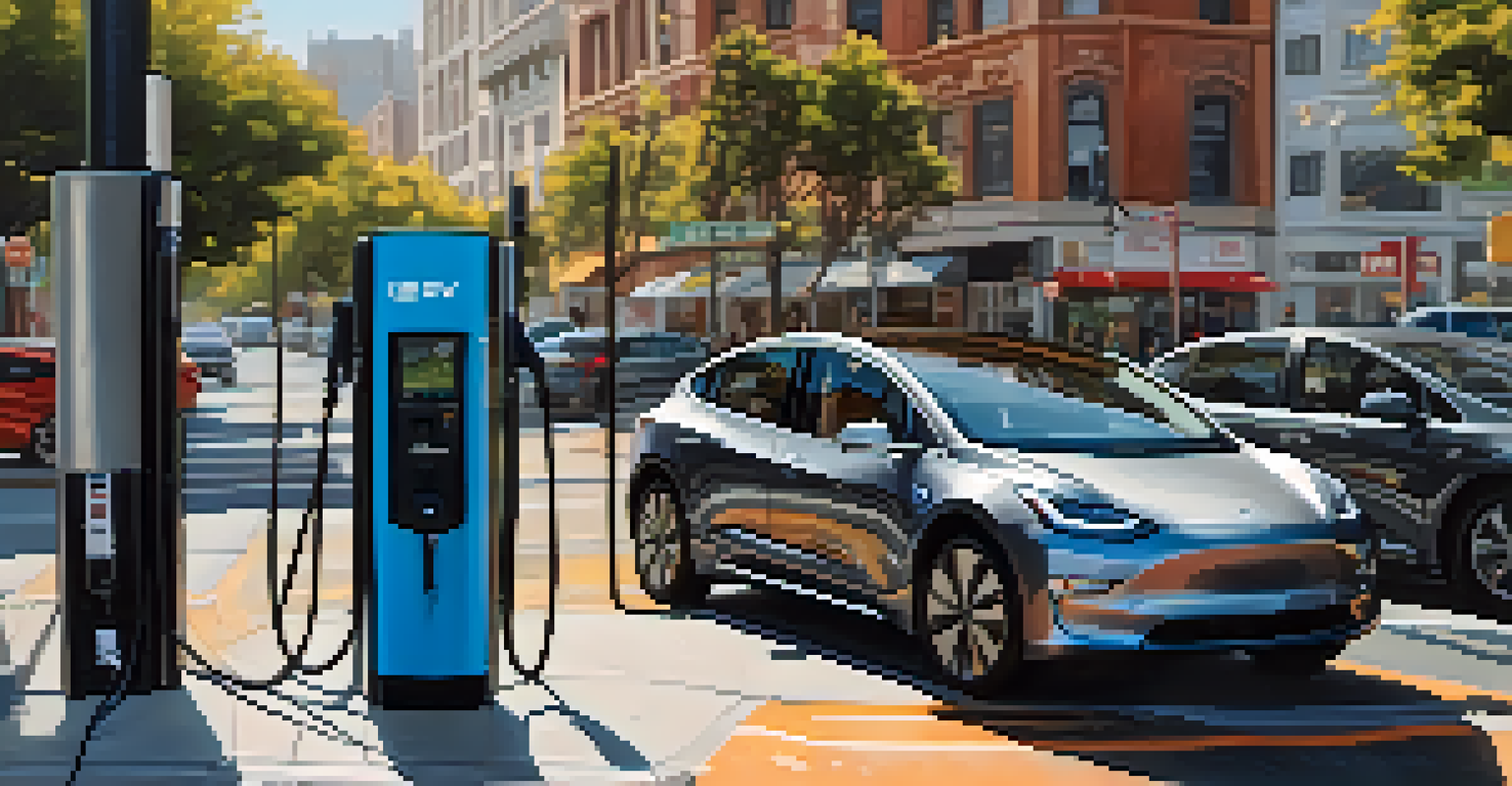San Francisco's Air Quality Improvement Initiatives Explained

Understanding San Francisco's Air Quality Challenges
San Francisco faces unique air quality challenges due to its geographic location and urban density. The city often experiences pollution from vehicles, industrial activities, and wildfires, contributing to a complex air quality landscape. Poor air quality can lead to health issues, making it crucial for the city to address these concerns head-on.
The environment is where we all meet; where we all have a mutual interest; it is the one thing all of us share.
To tackle these issues, local authorities have been monitoring air quality data closely. By understanding the sources and trends of pollution, they can implement targeted strategies. This proactive approach ensures that residents are not only informed but also protected from harmful air conditions.
Moreover, education plays a key role in raising awareness about air quality. By engaging communities and sharing data, San Francisco empowers its residents to take action in their own lives, from reducing vehicle use to supporting local initiatives aimed at cleaner air.
Innovative Policies for Cleaner Air
San Francisco has introduced various policies aimed at improving air quality, one of which is the Sustainable Streets Division program. This initiative focuses on enhancing public transportation options while promoting walking and cycling. By reducing reliance on cars, the city aims to cut down on harmful emissions significantly.

Additionally, stricter emissions standards for vehicles and industrial sources are in place. These regulations not only limit the amount of pollutants released into the air but also encourage companies to adopt cleaner technologies. As a result, San Francisco is paving the way for a healthier urban environment.
San Francisco's Air Quality Challenges
The city faces pollution from various sources, necessitating proactive measures to protect residents' health.
Community involvement is another cornerstone of these policies. Local groups are encouraged to participate in discussions and decision-making processes, ensuring that the initiatives reflect the needs and desires of residents. This collaborative effort strengthens the bond between the city and its citizens while fostering a shared commitment to better air quality.
Promoting Electric Vehicles to Reduce Emissions
One significant initiative in San Francisco is the promotion of electric vehicles (EVs). The city has set ambitious goals to increase the number of EVs on the road, recognizing their potential to reduce greenhouse gas emissions. By providing incentives for EV purchases, San Francisco is making it easier for residents to transition to cleaner transportation options.
We won't have a society if we destroy the environment.
Infrastructure development is also crucial in supporting this shift. The city has invested in expanding charging stations, making it convenient for EV owners to charge their vehicles. This improvement not only encourages more people to consider electric vehicles but also helps to normalize their use in everyday life.
Public awareness campaigns further complement these efforts, educating residents about the benefits of EVs. By showcasing success stories and the positive impact of switching to electric, San Francisco is inspiring many to make the change, contributing to a cleaner air future.
Green Spaces and Their Role in Air Quality
Green spaces play a vital role in enhancing air quality, and San Francisco is committed to expanding its parks and gardens. These areas not only provide recreational opportunities but also act as natural air filters. Trees and plants absorb carbon dioxide and other pollutants, improving the overall air we breathe.
The city has launched initiatives to increase urban forestry, aiming to plant more trees throughout neighborhoods. This effort not only beautifies the area but also helps combat urban heat and reduces the urban heat island effect. As a result, residents enjoy a cooler environment along with cleaner air.
Community Engagement is Key
Active involvement from residents through local initiatives enhances awareness and fosters a commitment to cleaner air.
Community gardening projects also encourage residents to engage with nature while contributing to better air quality. By transforming vacant lots into vibrant green spaces, citizens not only foster community spirit but also improve their local environment. These initiatives highlight the interconnectedness of nature and urban living.
Technology's Role in Monitoring Air Quality
Advancements in technology have significantly enhanced air quality monitoring in San Francisco. The city utilizes a network of sensors that provide real-time data on air pollution levels. This information is invaluable for both residents and policymakers, helping them make informed decisions based on current conditions.
Mobile apps and online platforms allow residents to access air quality data easily. With just a few clicks, individuals can check the air quality index (AQI) and plan their outdoor activities accordingly. This accessibility empowers citizens to take charge of their health and well-being.
Furthermore, technology aids in identifying pollution sources more effectively. By analyzing data trends, the city can pinpoint specific areas that require immediate attention. This targeted approach ensures that resources are allocated efficiently, maximizing the impact of air quality initiatives.
Community Engagement in Air Quality Initiatives
Community engagement is at the heart of San Francisco's air quality improvement efforts. The city actively involves residents through public forums, workshops, and surveys to gather input on air quality issues. This participatory approach ensures that initiatives resonate with the community and address their specific concerns.
Local partnerships further enhance these efforts, as organizations collaborate to promote awareness and action. By working together, residents and local groups can share resources, knowledge, and strategies to tackle air quality challenges effectively. This sense of unity fosters a strong commitment to achieving cleaner air.
Innovative Policies for Improvement
San Francisco is implementing policies like promoting electric vehicles and expanding green spaces to improve air quality.
Moreover, community-led initiatives, such as neighborhood clean-up days and educational programs, empower residents to take action. These grassroots efforts highlight the importance of individual contributions to broader air quality goals. Every small action counts in creating a healthier environment.
Future Trends and Goals for Air Quality
Looking ahead, San Francisco has set ambitious goals to further improve air quality. The city's long-term vision includes reducing greenhouse gas emissions by 40% by 2030 compared to 1990 levels. Achieving this target will require continued innovation and collaboration among stakeholders at all levels.
Emerging trends, such as the integration of renewable energy sources, will play a pivotal role in this journey. By transitioning to cleaner energy for transportation and industry, San Francisco can significantly reduce its overall emissions. This shift not only benefits air quality but also contributes to a more sustainable future.

As residents, policymakers, and organizations work together, the potential for meaningful change is immense. By staying committed to these goals and adapting to new challenges, San Francisco is on a path toward becoming a model city for air quality improvement. The future looks bright, and the community's efforts will make a lasting impact.